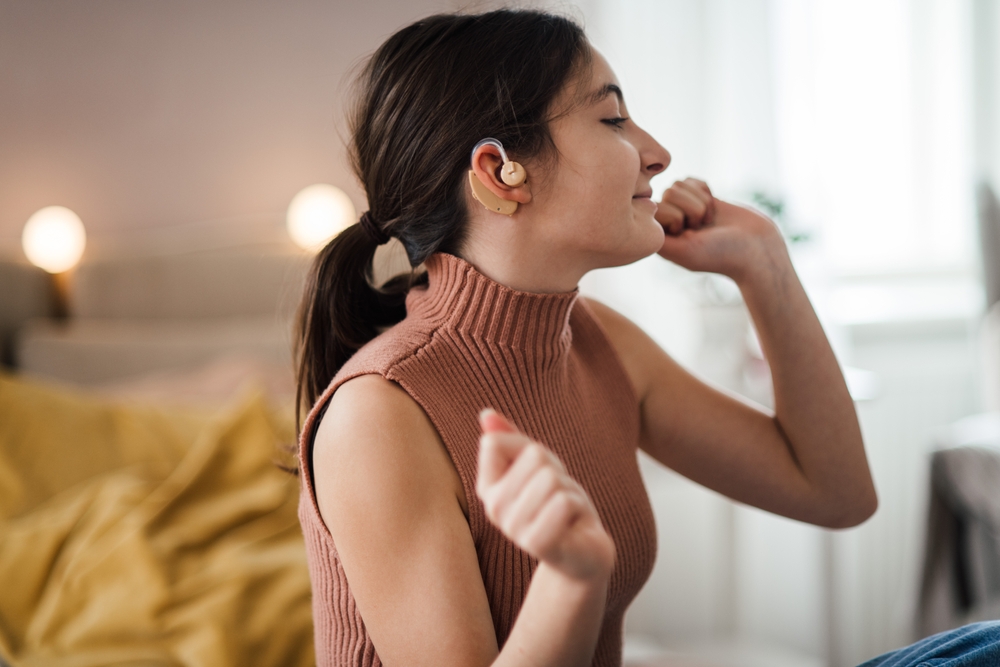 Experiencing hearing loss can be isolating, but fortunately, today’s world offers various solutions to break that barrier, and hearing aids are one of them. These advanced devices have transformed how people with hearing difficulties connect with the world.
Experiencing hearing loss can be isolating, but fortunately, today’s world offers various solutions to break that barrier, and hearing aids are one of them. These advanced devices have transformed how people with hearing difficulties connect with the world.
Whether for yourself or someone you care about, delving into the details of hearing aids can significantly improve the path toward better hearing and a more fulfilling life.
Understanding Hearing Loss
Hearing loss is quite prevalent. The World Health Organization reports that about 20% of people worldwide have hearing difficulty. This condition can stem from aging, genetics, exposure to loud noises, infections, or specific medical issues. Typically, it creeps in slowly, leading to challenges in understanding speech, keeping up with conversations in noisy settings, or catching high-pitched sounds.
See more: Take a Hearing Quiz
Types of Hearing Aids
Currently, there are five available types of hearing aids in the market that can help you deal with loss of hearing at different levels:
- Behind-the-Ear (BTE): This style rests comfortably behind the ear and is connected to a custom earpiece that fits inside the ear canal. BTE models are versatile and suitable for various degrees of hearing loss.
- In-the-Ear (ITE): ITE hearing aids are custom-made to fit entirely within the outer ear. They’re more discreet than BTE models and can accommodate mild to severe hearing loss.
- In-the-Canal (ITC) and Completely-in-Canal (CIC): ITC and CIC devices are smaller and fit partly or entirely inside the ear canal, making them nearly invisible. They are suitable for mild to moderate hearing loss.
- Receiver-in-Canal (RIC) or Receiver-in-the-Ear (RITE): Similar to BTE aids, RIC/RITE models have a small casing behind the ear, with a thin wire connecting to a speaker in the ear canal. They offer a more natural sound perception.
- CROS/BiCROS Hearing Aids: If you have normal hearing or minimal hearing loss in one ear and very little or no usable hearing in the other, wear the hearing aid on the better hearing side and an additional microphone on the poorer hearing side. CROS stands for “Contralateral Routing of Signals.” BiCROS stands for “Bilateral Contralateral Routing of Signals.”
Features and Technology
Modern hearing aids are equipped with an array of advanced features to enhance the listening experience, such as:
- Directional Microphones: These focus on sounds in front of you while reducing background noise improving speech clarity in noisy environments.
- Telecoils: Allow users to connect wirelessly to compatible phones, public address systems, or induction loop systems in public places like theaters and churches.
- Bluetooth Connectivity: Enables direct audio streaming from smartphones, TVs, and other devices, allowing convenience and accessibility.
- Noise Reduction and Feedback Cancellation: These features minimize unwanted background noise and eliminate the annoying whistling often associated with hearing aids.
Choosing the Right Hearing Aid
When deciding on the best hearing aid for your needs, it’s important to consider:
- The extent of Hearing Loss: Seeking guidance from an audiologist or hearing healthcare professional is critical to accurately assessing your hearing loss level and identifying the ideal device.
- Lifestyle and Preferences: Consider your daily activities, environments, and preferences. Some aids are more conducive to active lifestyles or frequent social interactions.
- Budget and Insurance Coverage: Hearing aids come in various price ranges, and coverage may differ based on insurance plans. Consider these factors while selecting a device.
Adapting to Hearing Aids
You’ve acquired your hearing aids, but what comes after that? It’s essential to understand that there’s an adjustment phase ahead that might demand time and patience. Here are some valuable tips to ease into this transition:
- Gradual Acclimatization: Start by wearing them in quieter environments before gradually introducing them to noisy settings.
- Regular Maintenance: Clean your hearing aids daily and follow the manufacturer’s instructions for care and maintenance to ensure optimal performance.
- Follow-Up Visits: Schedule follow-up appointments with your audiologist for adjustments and fine-tuning based on your experiences.
The Downlow on Hearing Aids
Hearing aids are not merely amplifiers for sound; they are tiny devices that can help you connect with the world. They empower individuals to actively participate in conversations, enjoy music, and engage more fully in various social activities. Embracing these devices not only restores hearing but also rekindles the joys of human connection.
This journey to better hearing through aids involves understanding your needs, selecting the suitable device, and adapting to a new way of experiencing sound. With the guidance of professionals and a positive attitude, hearing aids can significantly enhance the quality of life for those experiencing hearing loss, allowing them to rediscover themselves in the process.
If you need hearing aids or hearing-related services, come to El Dorado Hearing in Tucson for a hearing aid fitting. We are independent hearing aid providers, so we carry multiple hearing aids in different types and styles. You are sure to find something which suits your budget and lifestyle.




Leave a Reply